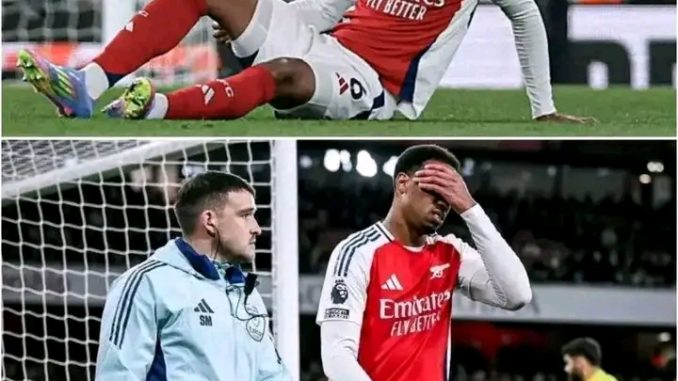
Arsenal are not leaving anything to chance this summer. After a title bid that fizzled out too soon, largely thanks to key players being unavailable when it mattered most, the club has taken a hard look at the issue. Their medical and performance teams have gone deep into the data, dissecting everything from player workloads to recovery patterns, especially right after international breaks — a period that proved especially damaging last season.
One of the most telling moments came during Gabriel Magalhães’ injury against Fulham. Internal analytics showed he clocked a sprint speed in that game that hadn’t been recorded in over two months. That spike, unnoticed or underestimated after his return from Brazil duty, likely pushed his body past its limit. It’s a classic case of overexertion meeting poor timing, and Arsenal now view it as a preventable mistake.
That incident has triggered a complete rethink of how players are handled post-international duty. The staff now treats each return as a unique case, weighing factors like muscle recovery, fatigue accumulation, and sprint-readiness far more carefully. There’s now an increased reliance on real-time biometric feedback, especially following long-haul flights and back-to-back fixtures on foreign soil.
And it wasn’t just Gabriel. The same trend cropped up with several other Arsenal players — critical absences following globe-trotting excursions. The club found a disturbing pattern: spikes in physical exertion, mismatched recovery times, and sudden injuries. It was a pattern hiding in plain sight, and Arsenal are now working to disrupt it before it wrecks another campaign.
Despite being hailed for their state-of-the-art training and recovery infrastructure, Arsenal’s internal audit revealed that rigidity in protocols was part of the problem. There was too much reliance on uniform plans, not enough tailoring. From now on, training will be increasingly individualised. Returning from Japan isn’t the same as returning from Paris — and Arsenal will now treat it that way.
Even with all this planning, no one’s deluded. Injuries can still strike out of nowhere. One mistimed tackle, one slippery turn, and weeks of recovery could follow. The club acknowledges that some injuries are just cruel twists of fate, but the goal now is to eliminate the ones that can be traced back to mismanagement or oversight.
These insights are even shaping Arsenal’s transfer window. The recruitment team has added a new filter to their scouting lens: availability. Injury records, durability, and resilience now matter just as much as passing stats or positional flexibility. In today’s game, being able to play consistently is its own kind of elite skill.
Gabriel is on track for full recovery before the season kicks off, but his injury stands as a cautionary tale. The tweaks Arsenal are making — smarter reintegration schedules, reduced training volume post-travel, and sharper communication between departments — are all designed to keep stars like him on the pitch. And if Arsenal truly want to topple Manchester City, it won’t just come down to tactics — it’ll hinge on having their warriors available when the battle calls.
Leave a Reply